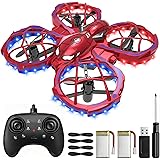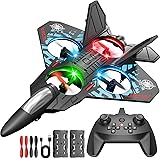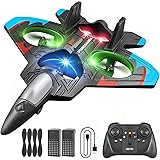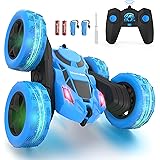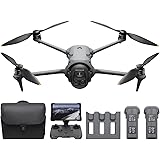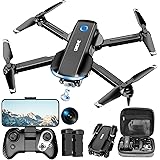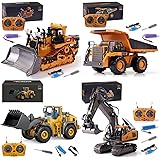The world of remote-controlled aircraft offers an exciting array of choices, and sometimes, choosing the right craft can seem daunting. Many enthusiasts are drawn to the agility and unique characteristics of certain designs. If the excitement around the awesome RC tricopter shown in the video above has captured your imagination, then a fascinating aspect of the RC hobby is about to be explored.
There are many types of multi-rotor drones available today, from the common quadcopter to more complex octocopters. However, the RC tricopter stands out as a distinctive and highly engaging option, often appreciated for its blend of simplicity and advanced maneuverability. This guide will delve into what makes these three-rotor aircraft so special, providing insights that complement the visual thrill presented in the accompanying footage.
What Exactly Is an RC Tricopter?
An RC tricopter is a type of multi-rotor unmanned aerial vehicle (UAV) that is propelled and controlled by three motors, each typically driving a propeller. This design contrasts sharply with quadcopters, which are equipped with four motors. The fundamental difference lies in how yaw (rotation around the vertical axis) is achieved.
While a quadcopter manages yaw by altering the speed of opposing motors, a tricopter employs a mechanical solution. One of the rear motors is usually mounted on a servo-controlled tilt mechanism. This unique setup allows the motor to pivot, providing the necessary thrust vectoring for precise yaw control. This mechanical aspect is often seen as a key identifier for the tricopter.
The Distinctive Flight Dynamics of a Tricopter
The flight characteristics of an RC tricopter are frequently highlighted by hobbyists. Because yaw control is handled mechanically, it is often felt that a tricopter offers a more “airplane-like” or “helicopter-like” flying experience, sometimes described as more fluid or natural. This is particularly true for those who appreciate responsive and precise control over their remote control aircraft.
Furthermore, the three-motor configuration can lead to a slightly different aerodynamic profile, which some pilots find enjoyable. It is often considered that a tricopter provides an excellent balance between the stability of a quadcopter and the agility that is sought after in acrobatic flying.
Why Are RC Tricopters So Awesome?
The appeal of the RC tricopter is multi-faceted, drawing in both seasoned pilots and newcomers to the hobby. Several key factors contribute to its popularity and the excitement often associated with it.
-
Unique Maneuverability: Precision in yaw control, managed by the tilting rear motor, is a significant advantage. Imagine being able to make exceptionally tight turns and detailed rotational adjustments that feel incredibly responsive. This level of control is highly valued, especially when navigating complex courses or performing aerial tricks.
-
Simplicity in Design (Compared to Larger Multi-rotors): With only three motors, the overall complexity of the power system can be reduced when compared to hexacopters or octocopters. This might translate to fewer electronic speed controllers (ESCs) to manage and potentially less wiring, which is often appreciated by those who enjoy building their own RC tricopter.
-
The DIY Factor: Tricopters are frequently chosen for custom builds. The straightforward frame design and the distinct servo-driven yaw mechanism offer a rewarding project for those interested in constructing their own remote control aircraft. Many online communities and resources exist to support enthusiasts through the building process.
-
A Rewarding Challenge: While offering great control, mastering the nuances of a tricopter can be a satisfying experience. The slight differences in handling compared to a quadcopter provide a fresh challenge for pilots, leading to a deeper understanding of multi-rotor flight dynamics.
Getting Started with Your Own RC Tricopter
If the excitement generated by the RC tricopter in the video sparks an interest in owning one, several pathways are available for entry into this specific drone hobby. Consideration should be given to your comfort level with building and your budget.
Choosing Your Tricopter Type
Various options are generally offered to new enthusiasts:
-
Ready-to-Fly (RTF) Models: For beginners, RTF tricopters are often recommended. These come pre-assembled and require minimal setup, allowing you to get flying quickly. Everything needed to operate the RC tricopter is typically included in the box.
-
Bind-N-Fly (BNF) Models: These models come assembled but require you to bind your own radio transmitter to the aircraft. This is a good option if a compatible transmitter is already owned or preferred.
-
Kits: For those who enjoy the building process, kits provide all the necessary components, but assembly is required. This offers a hands-on experience and a deeper understanding of how the remote control aircraft functions.
-
DIY Builds: The most involved option is building an RC tricopter from scratch, sourcing individual components. This allows for maximum customization and is often chosen by experienced hobbyists. It is a highly rewarding path for those with a technical inclination.
Essential Components for an RC Tricopter
Regardless of whether a kit or a custom build is chosen, certain core components are always needed:
-
Frame: This is the structural backbone of the tricopter, on which all other components are mounted.
-
Motors and Propellers: Three brushless motors are used, along with appropriately sized propellers for lift and thrust. The selection is critical for performance.
-
Electronic Speed Controllers (ESCs): Each motor requires an ESC to regulate power from the battery based on commands from the flight controller.
-
Flight Controller: This is the “brain” of the RC tricopter, processing inputs from the pilot and sensors to stabilize the aircraft and control the motors.
-
Servo: A crucial component for tricopters, as it controls the tilt mechanism of the rear motor for yaw control.
-
Receiver (Rx): This component receives signals from your radio transmitter.
-
Battery: A LiPo (Lithium Polymer) battery is typically used to power the tricopter, providing the necessary energy for flight.
-
Radio Transmitter (Tx): The handheld device used by the pilot to send control commands to the tricopter. A good quality transmitter is an investment that can serve many different remote control aircraft.
Flying Your RC Tricopter: Basic Principles and Considerations
Once your RC tricopter is ready for flight, understanding basic controls and safety is paramount. The initial flights are often the most memorable and a key part of the learning curve.
Understanding the Controls
The control scheme for an RC tricopter is similar to other multi-rotor drones but with the specific nuance of the yaw servo. The primary controls are:
-
Throttle: Controls the collective speed of the motors, dictating ascent and descent.
-
Roll: Tilts the tricopter side-to-side, causing it to move left or right.
-
Pitch: Tilts the tricopter forward or backward, causing it to move in those directions.
-
Yaw: Rotates the tricopter on its vertical axis. This is where the tilting rear motor and its servo play their vital role.
Imagine if you were steering a boat with a rudder; the yaw control of a tricopter provides a similar, direct steering sensation, often preferred by experienced pilots seeking precision.
Safety First When Flying Remote Control Aircraft
Safety is always a critical consideration in the drone hobby. It is strongly advised that flights are conducted in open areas, away from people, animals, and obstacles. Always check local regulations regarding drone operation, and ensure batteries are properly charged and propellers are securely attached and undamaged. Starting with small, controlled flights close to the ground is a common practice for new pilots. This minimizes risk and builds confidence.
Maintaining Your RC Tricopter
To keep your RC tricopter performing optimally, regular maintenance is essential. Simple checks can prevent issues and extend the life of your aircraft.
-
Propeller Inspection: Propellers should be checked before and after every flight for any cracks, chips, or damage. Damaged propellers can cause instability and significantly impact flight performance. Replacements are easily sourced.
-
Battery Care: LiPo batteries require careful handling. They should be stored at a safe voltage, never overcharged or fully discharged, and kept away from extreme temperatures. Proper battery care is crucial for both safety and longevity.
-
Motor and ESC Checks: Ensure motors spin freely and quietly. The ESCs should not show any signs of overheating or damage. Loose wiring is often a simple fix, but a common cause of issues.
-
Servo Health: Unique to the tricopter, the yaw servo’s function should be regularly verified. Smooth and responsive movement without binding or unusual noises is expected. Calibration of the servo may be needed periodically to ensure precise yaw control.
-
Frame Integrity: The frame should be inspected for any cracks or loose connections, especially after a hard landing. A sturdy frame is fundamental to the stability of the RC tricopter.
The experience of controlling an RC tricopter, feeling its agile responses and seeing it perform intricate maneuvers, is often described as truly exhilarating. This specific type of remote control aircraft delivers a unique and rewarding experience within the multi-rotor world, making it a compelling choice for anyone looking to enter or expand their drone hobby. The joy derived from building, flying, and mastering an RC tricopter is a significant draw, ensuring its place as an “awesome” machine in the hearts of many hobbyists.


